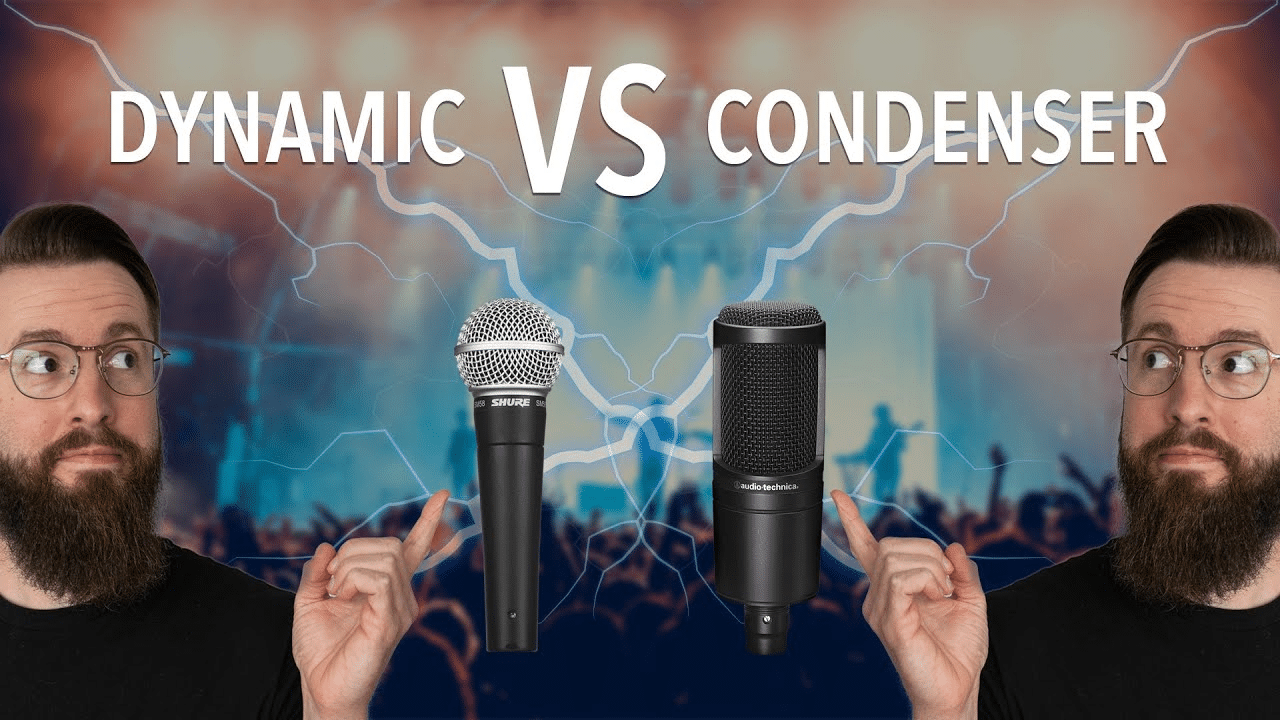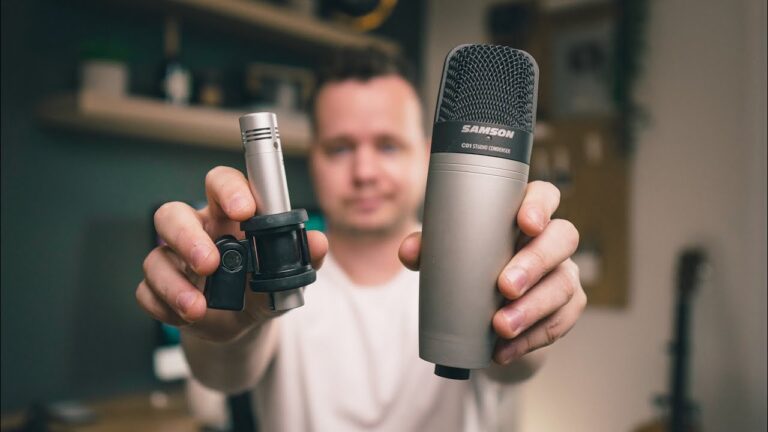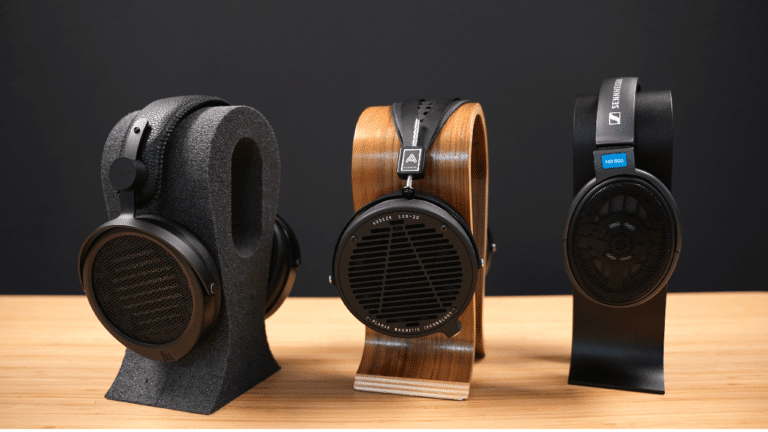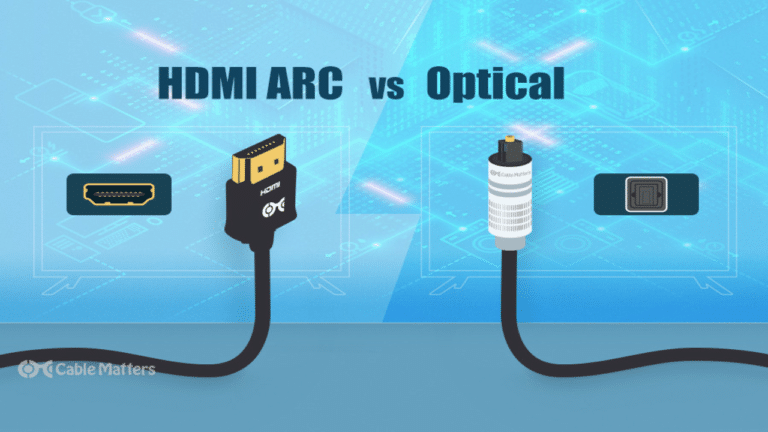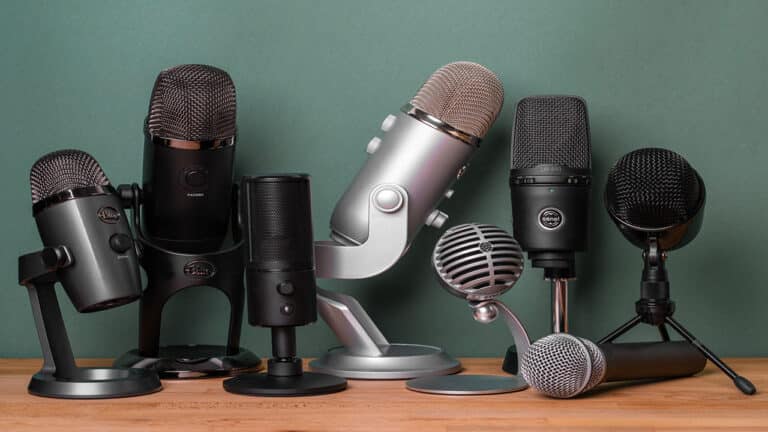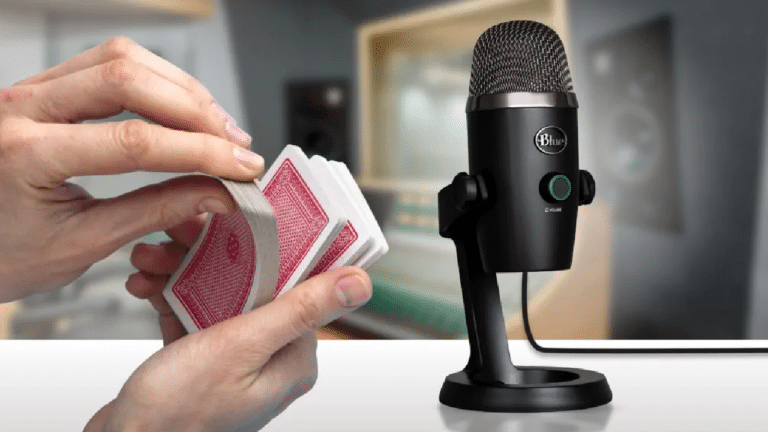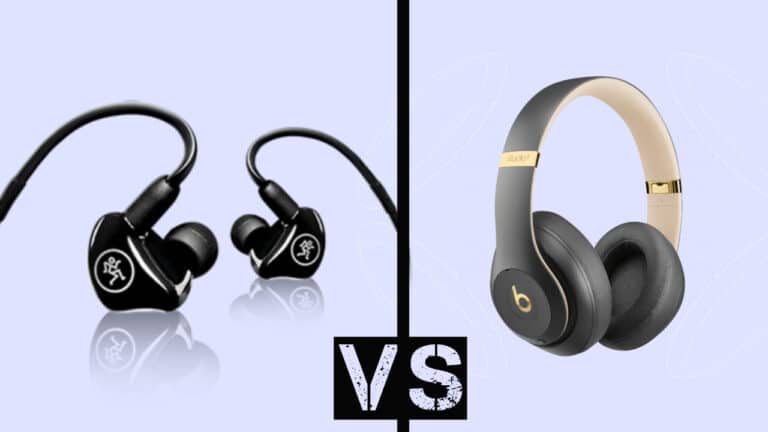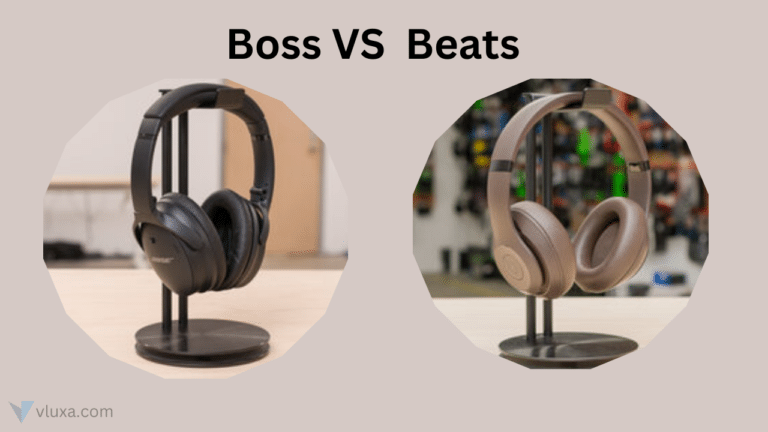When it comes to voice-over work, having the right microphone is crucial to achieving high-quality recordings.
Two popular options that professionals often consider are condenser and dynamic microphones.
Each type has its own unique features and benefits, and understanding the differences between them can help you make an informed decision.
In this article, we will explore the characteristics, strengths, and applications of both condenser and dynamic voice-over microphones, helping you choose the best one for your specific needs.
Condenser Microphone:
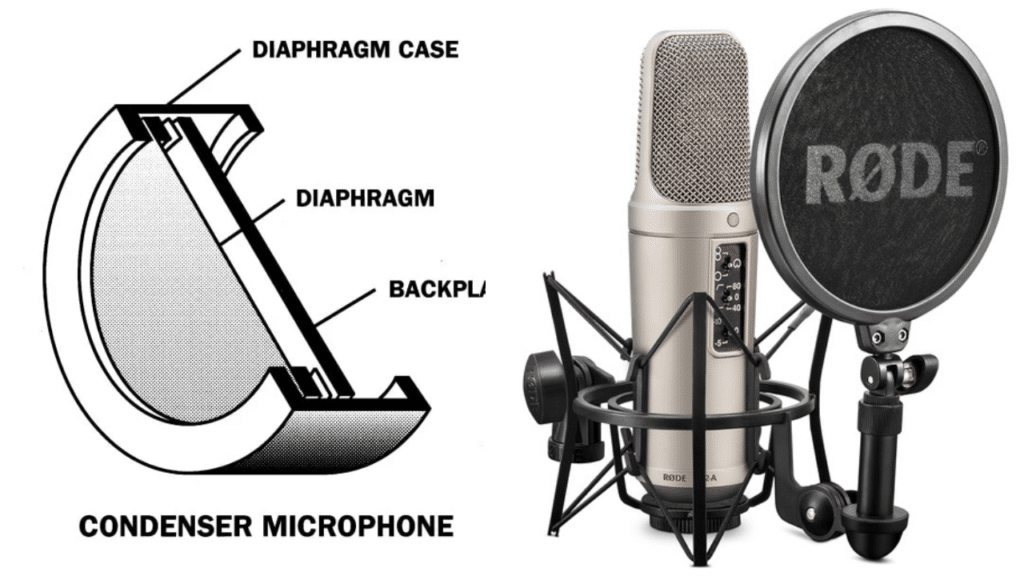
A condenser microphone is a type of microphone that uses a capacitor to convert sound waves into an electrical signal.
This design allows condenser microphones to be highly sensitive and capture subtle nuances in vocals.
They are often preferred in controlled studio environments where accurate sound reproduction is essential.
Understanding the Inner Workings of Condenser Microphones
A condenser microphone comprises three primary components:
- Diaphragm Case: This component serves as the structural support for the microphone.
- Diaphragm: The diaphragm is the movable element within the microphone.
- Backplate: The backplate remains stationary during microphone operation.
When the diaphragm is charged, it creates an electrical field. Sound waves impact the diaphragm, causing it to move closer to or farther away from the backplate.
This movement results in the translation of sound signals into electrical signals.
To visualize the process, refer to the accompanying image depicting a condenser microphone.
As sound waves reach the microphone, they strike the diaphragm. The diaphragm responds by oscillating between proximity to and distance from the backplate. This motion of the diaphragm and backplate contributes to the generation of electric signals, which serve as the microphone’s output.
The functioning mechanism of condenser microphones is elegantly simple, wouldn’t you agree?
Sensitivity and Sound Quality:
Condenser microphones are renowned for their sensitivity, making them ideal for capturing the details and nuances of voice-over performances.
They can accurately reproduce a wide frequency range, resulting in professional-grade recordings with transparent sound quality.
Durability and Handling Noise:
Condenser microphones are more sensitive to handling noise and require careful handling.
They are generally not as rugged as dynamic microphones and are better suited for stationary studio setups.
Power Requirements:
Condenser microphones require an external power source, usually 48-volt phantom power provided by audio interfaces or mixing consoles.
This power is necessary to charge the microphone’s capacitor and enable it to function properly. It’s essential to ensure that your recording setup can provide phantom power if you choose a condenser microphone.
Polar Patterns:
Condenser microphones often provide more polar pattern options, allowing greater versatility in capturing sound from different directions.
This flexibility makes them useful in studio environments where ambient noise needs to be minimized.
Price Range:
In general, condenser microphones tend to be more expensive than dynamic microphones.
The advanced technology and high sensitivity of condenser microphones contribute to their higher price point.
There are affordable condenser microphones available that still delivers excellent sound quality for voice-over work.
Usage Scenarios:
Studio vs. Field Recordings: Condenser microphones are commonly used in studio environments, where the ambient noise can be controlled. Their high sensitivity and accurate sound reproduction make them an excellent choice for voice-over work, podcasting, and other indoor recordings.
Podcasting and Home Studio: If you have a home studio or plan to record podcasts, a condenser microphone can provide professional sound quality, even in a less controlled environment.
By now, you should have gained a clear understanding of how condenser microphones operate.
Pros
- Excellent for vocals and high-frequency sounds
- Offers sensitivity for professional recordings
- Delivers studio-like audio reproduction
- Captures nuanced and detailed audio
- Superior sound quality.
Cons
- Delicate construction, handle with care
- Requires external power source
Dynamic Microphone
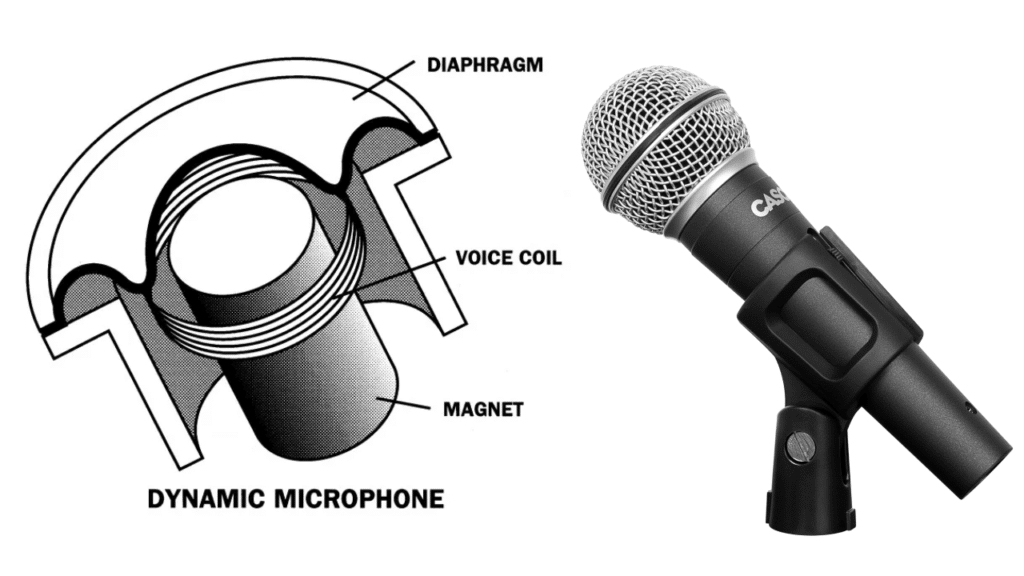
A dynamic microphone is a type of microphone that is commonly used for recording audio or music. It works by converting sound input into an electrical signal through a magnetic coil located inside the microphone.
There are two main types of dynamic microphones: moving coil dynamic microphones and ribbon dynamic microphones. Let’s take a closer look at how each type works.
1. Moving Coil Dynamic Microphone:
In a moving coil dynamic microphone, there is a non-conductive diaphragm with a conductive metal coil attached at the back. The coil is placed in a cylindrical magnetic framework within the microphone.
Here’s how it works:
- The magnetic field created by the coil is permanent, ensuring proper electromagnetic induction.
- When sound waves hit the diaphragm, it moves along with the conductive coil.
- This movement creates an oscillation between the conductive coil and the magnetic field, resulting in the generation of an AC voltage through electromagnetic induction.
- The AC voltage, which represents the audio signal, is conducted through lead wires within the microphone.
2. Ribbon Dynamic Microphone:
The second type of dynamic microphone is the ribbon dynamic microphone. It features a diaphragm that is typically shaped like a ribbon and is made of ultra-thin aluminum. The diaphragm is surrounded by a magnetic structure.
Here’s how it works:
- The conductive diaphragm of the ribbon microphone moves back and forth within its fixed position within the magnetic field surrounding it.
- This movement causes an AC voltage to flow through the microphone, generating the mic’s audio signal.
Both types of dynamic microphones utilize electromagnetism to convert sound into clear audio signals. The magnetic field and the movement of the diaphragm are crucial in generating the electrical signals that represent the recorded sound.
Sensitivity and Sound Quality:
Dynamic microphones, although less sensitive than condenser microphones, excel at handling high sound pressure levels without distortion.
They are particularly suitable for capturing powerful and loud vocals, making them a popular choice for live performances and situations where durability is essential
Durability and Handling Noise:
Dynamic microphones have a sturdy construction and can withstand rough handling, making them more durable than condenser microphones. They are less prone to damage from drops or shocks, which makes them a preferred choice for portable setups or on-stage performances.
Power Requirements:
Dynamic microphones, on the other hand, do not require external power as they generate their electrical signal through electromagnetic induction. They can be connected directly to audio interfaces or mixers without any additional power requirements.
Polar Patterns:
Dynamic microphones typically have a fixed polar pattern, commonly cardioid.
This pattern is ideal for capturing sound directly in front of the microphone while minimizing background noise.
Price Range:
Dynamic microphones are generally more budget-friendly, making them a popular choice for beginners or those on a tighter budget.
They offer a good balance between price and performance.
Usage Scenarios:
Studio vs. Field Recordings: Dynamic microphones, on the other hand, are better suited for field recordings and live performances. Their rugged construction and ability to handle high sound pressure levels make them reliable options for outdoor environments or situations where durability is essential.
I hope this provides a clear explanation of dynamic microphones and how they work. If you have any more questions, feel free to ask!
Pros
- Durable and rugged construction
- Ideal for loud recording environments
- No need for external power
- Affordable option for users
- Easy plug & play setup
Cons
- Lower sensitivity compared to condenser mics
- Not ideal for high-frequency sounds
What is a diaphragm?
The diaphragm, a crucial part of every microphone, acts like a tiny speaker. It consists of a thin plastic sheet, magnet, and coil. When hit by acoustic energy, it vibrates, generating voltage.
Small diaphragm mics:
Mics excel at capturing higher frequencies and maintaining a consistent polar pattern. They’re ideal for room mics, snare drums, pianos, and acoustic guitars.
Large diaphragm mics:
on the other hand, have a bigger, less uniform polar pattern and higher sensitivity, resulting in a fuller sound. They’re commonly used for recording vocals, bass drums, and to achieve a vintage tone in live rooms.
USB mic vs. XLR: what’s the difference?
USB microphones:
USB microphones are easy to set up, portable, and cost-effective, making them great for beginners or those on a budget.
They plug directly into your computer’s USB port and are ready to use. USB microphones may have limited audio quality and compatibility with professional equipment.
XLR microphones:
XLR microphones offer superior audio quality and versatility. They require an audio interface or mixer with XLR inputs for connection. XLR microphones are commonly used in professional studios and live performances.
They provide the opportunity for future upgrades and customization but require additional equipment and setup complexity.
Choosing the Right Microphone
When selecting a voice-over microphone, consider the following factors:
- Recording Environment: Assess the ambient noise and acoustics of your recording space.
- Sound Source: Determine the type of voice-over work you’ll be doing and the desired sound characteristics.
- Budget: Consider your budget range and explore options that offer the best value for your investment.
- Compatibility: Ensure that the chosen microphone is compatible with your recording equipment and connectors.
By evaluating these factors, you can make an informed decision that best suits your specific needs.
Tips for Optimal Voice-Over Recordings
To achieve the best voice-over recordings regardless of the microphone you choose, follow these helpful tips:
- Use a pop filter or windscreen to minimize plosive sounds and sibilance.
- Maintain an appropriate distance from the microphone to achieve the desired sound quality.
- Monitor your recordings with headphones to identify any unwanted noise or issues.
- Experiment with microphone placement and angle to find the sweet spot for your voice.
- Consider acoustic treatment for your recording space to minimize reflections and improve sound quality.
Expert Recommendation:
To truly unleash the boundless potential of your voice, we recommend having both condenser and dynamic microphones in your sonic arsenal.
Condenser mics traditionally steal the show in voice-overs, they are more sensitive to room acoustics and vocal imperfections. As such, they shine brightest in professional studios.
If you find yourself narrating audiobooks in a home studio with less-than-ideal acoustic conditions or frequently on the move, a dynamic microphone becomes your trusted sidekick.
Conclusion:
Both condenser and dynamic microphones have their strengths and are suitable for different voice-over applications. Condenser microphones excel in controlled studio environments, capturing the details and nuances of voice-over performances.
Dynamic microphones are reliable and rugged, making them ideal for live performances and outdoor recordings.
Consider your specific needs, recording environment, and budget when choosing the right microphone for your voice-over work. With the appropriate microphone, you can achieve professional-quality recordings that bring your voice to life.
FAQs:
Q1. Are condenser microphones better than dynamic microphones for voice-over work?
It depends on the specific requirements of your voice-over work. Condenser microphones excel in controlled studio environments, while dynamic microphones are better suited for live performances and outdoor recordings.
Q2. Do condenser microphones require external power?
Yes, condenser microphones require an external power source, usually in the form of phantom power, to operate.
Q3. Can dynamic microphones capture subtle nuances in vocals?
While dynamic microphones are less sensitive than condenser microphones, they can still capture vocals effectively. However, their primary strength lies in handling high sound pressure levels and ruggedness.
Q4. Are there affordable options available for both condenser and dynamic microphones?
A: Yes, there are affordable
.
